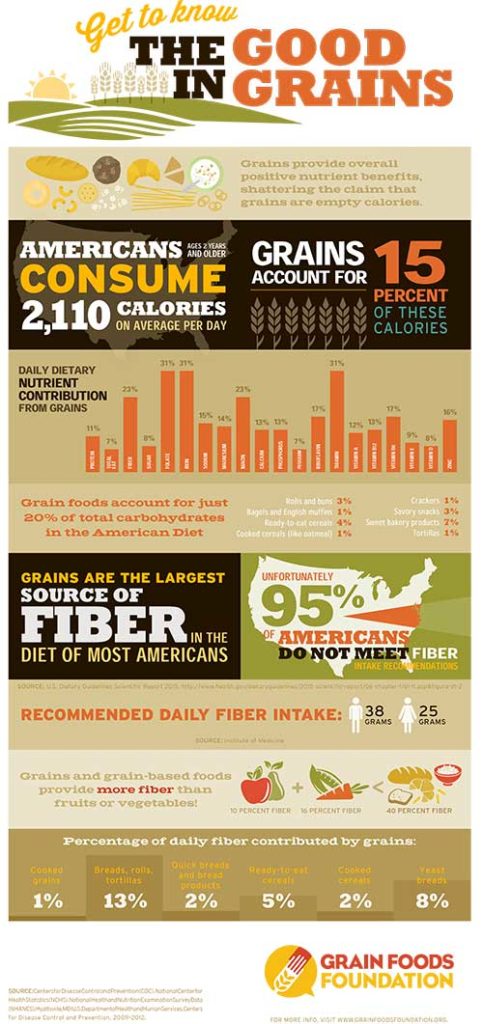Get to know the good in grains. Grains provide overall positive nutrient benefits that shatter the claim that grains are empty calories. Americans, ages two years and older, consume 2,110 calories on average per day. And grains only account for 15% of these calories. If you take a look at the Daily dietary nutrient contribution from grains, they provide 11% of protein, 7% of total fat, 23 of fiber, 8% of sugar, 31% of folate and iron, 15% of sodium, 14% of magnesium, 23% of niacin, 13% of calcium and phosphorus and 7% of potassium. Grains also provide 12% of Vitamin A and 13% of Vitamin B12, 9% of Vitamin E and 8% of Vitamin D.
In addition, grains contribute to 31% of the daily dietary recommended amount of thiamin and 16% of zinc. Furthermore, grain foods only account for 20% of total carbohydrates in the American diet. Sweet bakery products come in at 7%, followed by ready-to-eat cearals at 4%. Rolls, buns and savory snacks make up 3% and cooked cereals, bagels and English muffins, crackers and tortillas make up 1%.
The Institute of Medicine recommends that men consume 38 grams of fiber per day and that women take in 25 grams of fiber per day. Unfortunately, 95% of Americans do not meet fiber intake recommendations. But grains can help. They are the largest source of fiber in the diet of most Americans. Grains and grain-based foods provide more fiber than fruits and vegetables. Fruits offer about 10% fiber and vegetables provide about 16% fiber compared to the 40% fiber that grains offer.
Breads, rolls, and tortillas offer 13% of the daily fiber contributed by grains. Yeast breads offer 8%, ready-to-eat cereals offer 5%, quick breads, bread products and cooked cereals offer 2% of the daily fiber and cooked grains offer 1%.
Download this infographic

